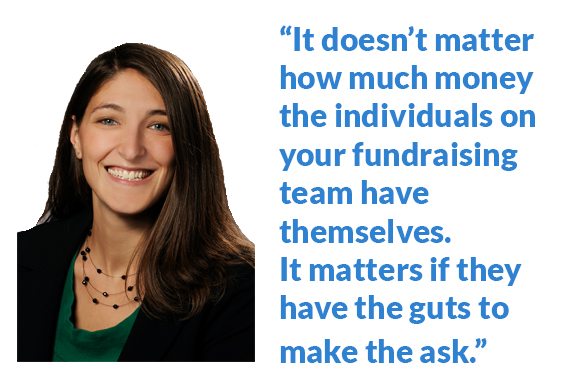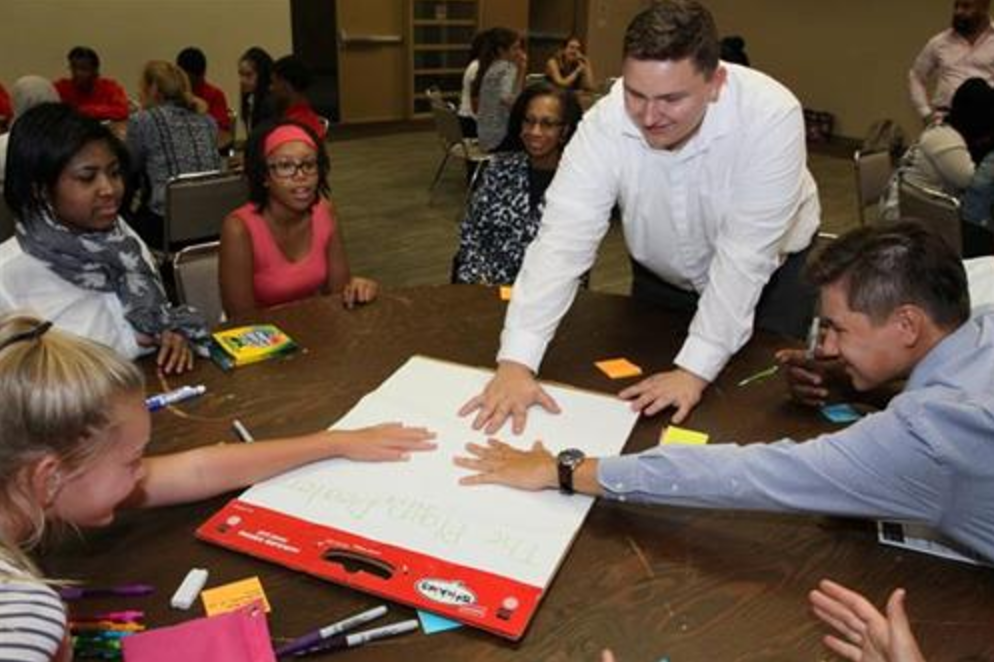Is there a place in your neighborhood that feels unsafe? Maybe an empty lot, a corner obscured by overgrown plants, or a dark passageway between buildings? Have you ever wondered what could make your public spaces feel safer, but don’t particularly relish ideas like flood lighting, razor wire, or increased police presence? What can you and your neighbors do to make your community feel safer without such tactics?
Good news: There are actually lots of things you can do! Fun, creative, neighborly things that rely on the principles of good design to discourage crime and encourage community. Here to tell you about them is Ifeoma Ebo, Senior Design Advisor in the New York City Mayor’s Office of Criminal Justice.
Q: Could you give us a brief intro to your work?
I work on the Mayor’s Action Plan for Neighborhood Safety, an initiative that addresses crime prevention and public safety by empowering people, improving places, and strengthening networks. I focus on the “places” aspect: working with residents to identify “hot spots” in different communities and come up with ways to make them “cooler.” Right now, we’re installing cameras, more secure doors, and permanent lighting upgrades in New York City Housing Authority campuses around the city. Long-term, we’re looking to align our strategies with local initiatives—whatever neighbors are already doing in their area to make it safer—and incorporate these approaches into future city projects. Working this way strengthens engagement between local communities and the government.
Q: What makes a public space feel safe?
Sometimes it’s just the presence of other people. Knowing that other eyes will be watching a space limits the ability of criminals to do as they please. Visibility is also big: can you be fully aware of your surroundings, or there are high bushes or tall walls blocking your view? Or it is it dark when there could be improved lighting? There’s also the concept of social cohesion: spaces being used to encourage social interaction. If your basketball court is in disrepair and no one can use it to play basketball, it may attract other kinds of activity. But if you fix it up so people can play, they will, and that will discourage undesired activities. In general, the maintenance of public spaces can improve perceptions of safety: a park that’s free of trash with a fresh mural in it looks a lot more inviting than a park strewn with litter and a peeling old mural in it.
Q: How can design enhance safety without more police presence or intimidating tactics like tower lights and barbed wire?
There’s really not a one-size-fits-all solution; it’s about what the particular community wants. Residents can come up with the best solutions for their public spaces, since they’re the most aware of their own challenges. Tower lights are a double-edged sword: they have been shown to reduce crime, but they produce a lot of noise and light pollution, and even air pollution. Sometimes lighting can be orchestrated in a more pleasing way and foster the same safety benefits, like a projection of dancing lights on the ground, or lights that create games for children. But if a certain neighborhood needs more in the way of crime prevention than dancing lights, that won’t work there. So there’s a give and take, and different measures work better in different communities.
At the Mayor’s Office of Criminal Justice we use the term “neighborhood activation” to address public safety in public spaces because we’re not just talking about cameras, lights, and security infrastructure. Sure, we want to put in better lighting, but we also want to fix the basketball court and put benches there so people can watch. We want to change the use of the space—activate it—so that residents can build stronger social networks and become empowered to keep watch over their own community.
Q: What can neighbors do to help make spaces safer and more welcoming?
Start by identifying the underutilized spaces near you: an alley, a dead end street, a pathway between buildings. Then think about how you could make them more useful. Keep in mind that many spaces—too many—are only designed to be used during the day. With proper lighting, a basketball court or adult fitness equipment can just as easily be used at night as during the day. Think about how to achieve maximum use.
Also consider what can be done in the short term that will work for your neighbors, then rally support for it. Sometimes community garden plots are great; sometimes a playground or fitness equipment is better. It depends on what your particular neighbors would appreciate and use. Remember that “public interest” isn’t five people who are interested—you need to get the whole neighborhood on board! Take small steps at first to gauge people’s interest and get them rallying around the idea, then build up more of a project plan from there. One good small step is just getting people together to clean up the area in question: organize a day where you go as a group to pick up the trash, clear out the old tires; whatever needs doing.
Mobilizing like this is the first step in making community-led changes part of the greater system. Recently, the Brownsville Community Justice Center in Brooklyn identified three dead end streets in their neighborhood that were facing challenges to public safety. They worked with youth to paint murals in them, installed seating and umbrellas, and put in a request with the Department of Transportation [DOT] to make one a pedestrian plaza. So the community has done the initial legwork, and now the DOT can step in to formalize it, put trees there, maintain it… It can become a part of public infrastructure and a model for more of the city’s capital projects in the future.
Remember, too, that if you turn a vacant lot into a thriving community garden or a teen center it can go a long way towards informing a future vision for the community made by public agencies. Encouraging community stewardship empowers residents to transform their neighborhood incrementally. That’s what creates lasting vibrancy in a community.








